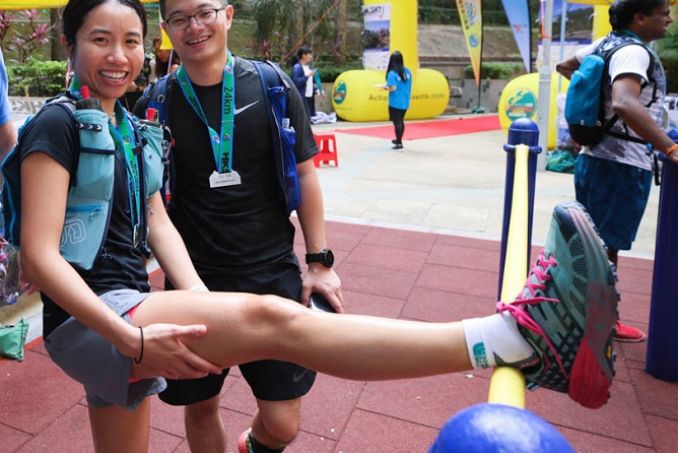Sports Science Tips for Runners; Recovery
By Dr. David Cosman (Chiropractic) in Hong Kong
For Action Asia Events
Recovery has a few different meanings; they are all important in developing a strength & conditioning foundation, in training and during a racing.
How would you do going up the second or third vertical in one session? Being conditioned can be considered the ability to transition from hard work to light effort then going hard again, multiple times within one event. In this case, recovery would be obtained running on the flats or easy descents between vertical climbs.
A second angle would be taking rest days to give your body an anabolic (rebuilding) break and your mind a sanity break, while a third recovery mode would be relaxed tempo runs (focusing on technique and the timing of the technique).
A fourth treat is therapeutic maintenance ranging from simple massage to the advanced Intermittent Vacuum Therapy, dynamic frequency microcurrent stimulation and plane-specific Fascial Manipulation. A fifth indication for recovery would be rest and rehab of an injury; this is a topic for another essay.
Over-training is detrimental to an athlete’s progress and longevity. Relying purely on too many long runs to build up to a desired distance is an over-training rookie error that potentially leads to injuries. On the other hand, a rest day followed by an easy tempo day is like taking two recovery days after a long tough run.
Plan your schedule with training diversity, alternating strength & speed days, endurance run days, easy tempo (timing/technique) runs, interval speed work and don’t forget your rest days, depending on periodization of your next race(s).
Factor five: Good recovery can dovetail cardiovascular health if it is defined by how fast your heart rate comes back to a normal resting heart rate. If your training heart rate does not come down in a timely manner (ask your health professional for timing details), you should consult with your medical doctor immediately.
Consider these tips:
- • Gain and retain a foundation of strength and conditioning, then build up the endurance with a balanced training schedule depending on your periodization (when is the big race?).
- • Take rest days, get sufficient sleep; keep consistent sleeping & waking hours.
- • Nutrition and hydration are factors.
- • Excessive foam rolling on one plane can be problematic in the long run.
- • Take immediate care of acute injuries.
- • Warm up and cool down with consistency.
These tips might help with your recovery efforts. If you feel unusually sluggish, consult with your doctor to rule out medical health problems.
About the author: Dr. David Cosman practices chiropractic in Sheung Wan, HK. In Canada, he was an athlete blessed with good coaches, and worked as a chiro and lecturer with athletes and non-athletes, coaches, chiros, physios, medical doctors and naturopaths. He is certified in Stecco Fascial Manipulation, uses therapeutic modalities, makes custom corrective foot orthotics and tapes ankles.
Practical movement – “the sports science of the technique” is his passion.
Dr. David Cosman DC
Tel: (+852) 2975 4114
Cosman Health Group Ltd
1st floor, 19-25 Jervois Street
Sheung Wan, Hong Kong
For more Action Asia race details, please visit below:








/CBREMKC_9735_HK_Logo web banner-01.jpg)
/RoyalInt300100banner.jpg)
/HysanWebBannerDesign300.png)
/Goodman300x100px-v2.jpg)